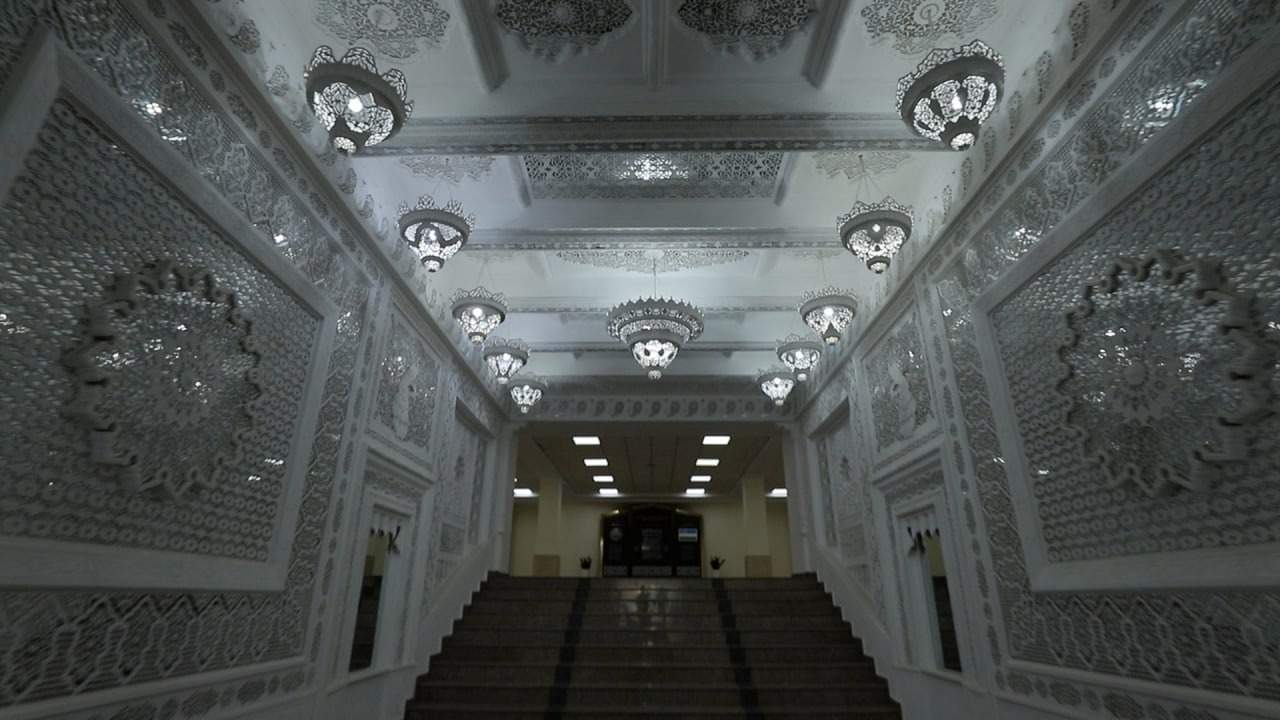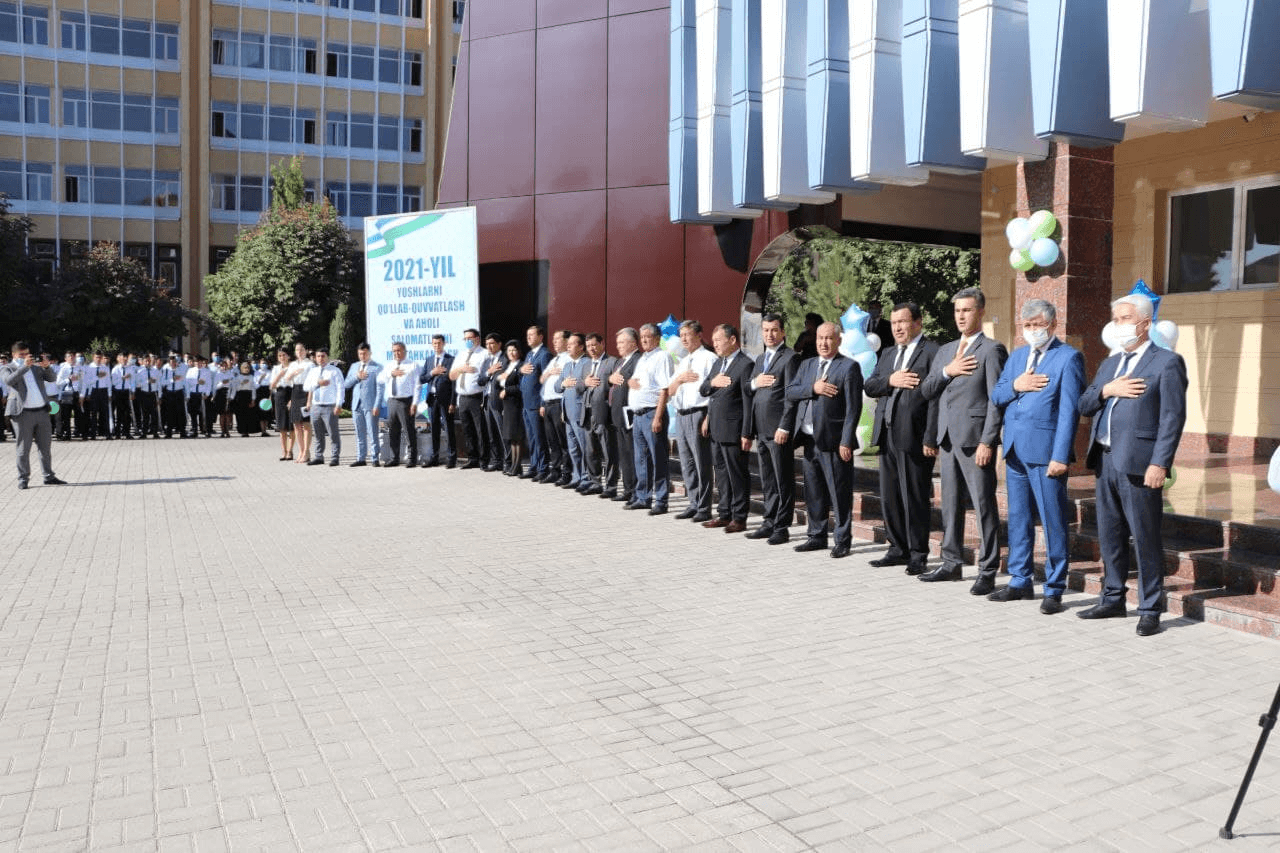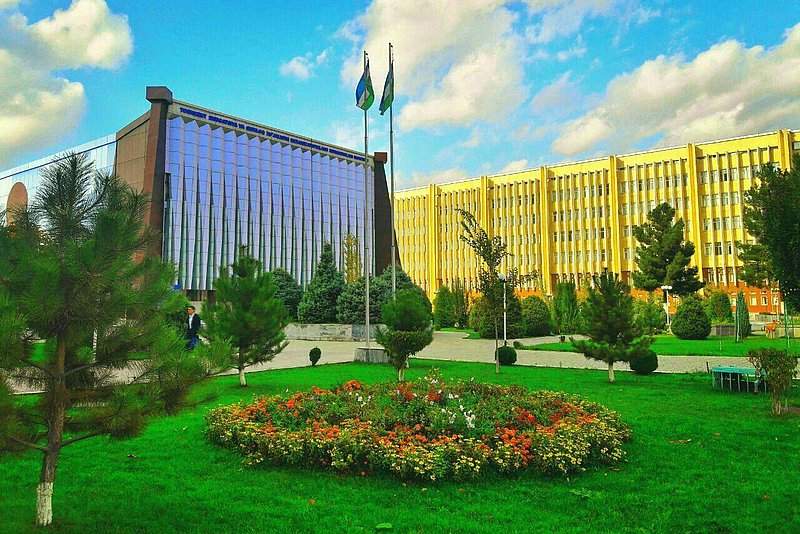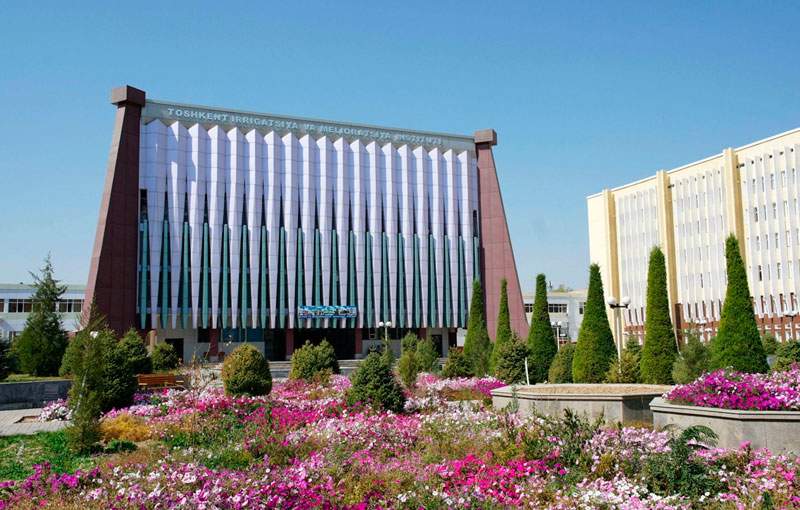"Tashkent Institute of Irrigation and Agricultural Mechanization Engineers" National Research University.
State university
Tashkent city
0.0
(0 Feedbacks)
Admission period
5 June 2025 - 25 June 2025
University licenses
About university
About Tashkent Institute of Irrigation and Agricultural Mechanization Engineers:
"Tashkent Institute of Irrigation and Agricultural Mechanization Engineers" National Research University began in 1923 with the establishment of the Reclamation Engineering Faculty of the Hydrotechnical Department of the Technical Faculty of Turkestan State University. In 1923, 24 students were agronomists and 16 students were hydromelioration engineers. By the years of independence, cooperation between the university and the universities of developed foreign countries on the exchange of educational and scientific experiences developed. Uzbek language literature of the subjects taught at the university was created, wide opportunities were created for young students to learn languages and continue their studies in foreign higher education institutions, including the scholarship of the President of the Republic of Uzbekistan, which was introduced to support talented students. , "Beruniy" and "Navoiy" state scholarship competition, so far more than 100 of our students in the field of agriculture and water management have won prizes. On March 30, 2004, the Tashkent Institute of Irrigation and Agricultural Mechanization Engineers was transformed into the Tashkent Institute of Irrigation and Reclamation by the decision of the Cabinet of Ministers of the Republic of Uzbekistan. The institute is literally experiencing a new period of responsibility these days. Training of highly qualified personnel for agriculture and water management in the republic is an urgent issue. Currently, more than 12,300 students are studying at the university in 7 faculties in more than 40 fields of study, about 30 master's specialties. At the university, more than 410 qualified professors teach them in 35 departments, 70 of them are doctors of science, professors, 195 are candidates of science, PhD, associate professors.
The university has five modern educational buildings, three educational laboratory buildings, modern educational scientific centers, an information resource center with a general fund of about 700,000 seats, 3 student houses with 2400 seats, a student canteen with 460 seats. and has an amusement park. The main focus of the university team is on the training of highly qualified specialists for water management in the conditions of the market economy based on the tasks of the law on education and the national program of personnel training. Based on the law "On Education" and the national training program, the university focuses on the training of highly qualified specialists for agriculture and water management in the market economy. According to the Decision of the President of the Republic of Uzbekistan No. PQ-3003 of May 24, 2017, "Tashkent Institute of Irrigation and Reclamation" was transformed into Tashkent Institute of Irrigation and Agricultural Mechanization Engineers.
According to the Decision of the President of Uzbekistan dated December 10, 2021 "On measures to fundamentally improve the system of engineering and technical personnel training based on innovation and digitization for economic sectors" No. PQ-42, the institute "Tashkent Irrigation and Agriculture "Institute of Mechanization Engineers" was transformed into a National Research University.
Today, the prestigious UK international rating agency "QS Quacquarelli Symonds" announced the results of the world's best universities ranking - "QS World University Rankings-2025". For the first time, two higher educational institutions of Uzbekistan took a place in the rating
University grants:
Grants are available at the "Tashkent Institute of Irrigation and Agricultural Mechanization Engineers" National Research University. State grants are awarded to talented students who have obtained high marks in the entrance exams. These grants are awarded for one academic year only, and students admitted on the basis of a contract have the opportunity to study on the basis of a grant in the following academic years.
University Scholarship:
Students studying on the basis of a state grant:
The basic amount of the scholarship is paid in the 1st semester of the first year;
- Starting from the next semester, depending on the results of the previous semester, the scholarship will be awarded and paid in the following order:
- Students with excellent performance in all subjects will be paid with a 20% increase in the basic amount of the scholarship;
- Scholarships will not be awarded to students who satisfactorily mastered 30% or more of their general subjects, i.e. scored less than 71 points. With the exception of orphans and children deprived of parental care and students with group 1 and 2 disabilities;
- All other students receiving education on the basis of a state grant will be paid the basic amount of the scholarship.
Scholarships are awarded and paid to students studying on the basis of a payment contract in the following order:
- Contract students can study with or without a scholarship;
- The basic amount of the stipend will be paid to those under the contract, regardless of the mastery rate.
- The stipend will be assigned and paid after the contract amount has been paid.
Scholarships are paid for students with group I and II disabilities in the following order:
- Students with group I and II disabilities are assigned and paid a 50% higher stipend than the base amount of the stipend, regardless of whether they study on a grant or a contract;
- Students who belong to the group of orphans and children deprived of parental care, who are fully supported by the state, are assigned and paid a scholarship in the basic amount of the scholarship.
Entry requirements: Participation in state exams organized by BMB(DTM).
University dormitory: University dormitory consists of 5 student residences, houses of young scientists and doctoral students. Complete information about the dormitories
International cooperation:
Today, there are a total of 87 agreements and memoranda concluded with foreign partners and currently in force at the Institute of International Trade and Industry, which are concluded with advanced institutions in leading European countries, the USA, Russia, developed countries of Asia, and Central Asian countries. Currently, a total of 23 international projects with a total value of 1 billion US dollars and 700 million Euros are being implemented at TIQXMMI. International joint master's degree and international joint doctoral studies with double degrees in 4 specialties are operating at TIQXMMI. Also, every year more than 30 professors from leading foreign universities are involved in the educational and scientific process of the institute. Students from China, Kyrgyzstan, Turkmenistan, Tajikistan, Kazakhstan, Russia, Germany, Colombia, Afghanistan, South Korea are studying at the institute. Every year, more than 100 professors and students of the institute go to universities and organizations of developed countries for training and internships.
Bachelor’s degree program:
When applying to the university, the applicant must submit the following documents to the admission committee:
- Application indicating the faculty, specialty and form of study addressed to the University Rector- Original copy of the document confirming secondary or vocational education- Copy of passport- 6 photos sized 3.5×4.5 cm- Original copy of the document confirming the admission right based on the winner status of international and national Olympiads, contests and competitions- Military recommendation for those who completed military service under the normal procedure
The admission documents are accepted from June 5 to July 5!
Required links:
- (tiiame) Quotas, scholarships and admission scores - click here!
- (tiiame) For more information about scholarships
- (tiiame) Contract prices
Programs
Directions are not available
Admission Quota and Entrance Scores
| Course of Study | Admission quota | Scholarship Entry Scores | Entry points for the contract |
|---|---|---|---|
| Information systems and technologies (by networks and fields) | 15 / 10 | 128.1 | 90.5 |
| Accounting and auditing (by specialization) | 5 / 15 | 139.9 | 108.1 |
| Ecology and environmental protection (in water management) | 5 / 15 | - | 61.8 |
| Electric power engineering (based on circuits and directions). | 5 / 15 | 73.4 | 62.1 |
| Phonetics and Teaching Languages: English Language | 5 / 10 | 158 | 143.2 |
| Geodesy and geoinformatics | 5 / 10 | 68.3 | 58 |
| Hydropower | 15 / 10 | 74.9 | 67.5 |
| Hydrology (hydrology of rivers and water resources) | 15 / 10 | 90.6 | 75.8 |
| Utilization of hydraulic equipment and pump stations | 25 / 10 | 68.4 | 64.2 |
| Hydrotechnical equipment (in water engineering). | 25 / 10 | 71.4 | 66.6 |
| Economy (by sectors and industries) | 5 / 15 | 157.4 | 121 |
| Hydroelectric facilities in irrigation systems. | 5 / 10 | 68.3 | 62.4 |
| Cadastral system (state cadastre) | 30 / 20 | 110.3 | 90.5 |
| Material science and new materials technology (in terms of networks) | 30 / 10 | 68.3 | 64 |
| Labor Protection and Technical Safety (in water industry) | 15 / 15 | 74.8 | 67.5 |
| Meliorative hydrogeology | 25 / 15 | 68.6 | 60.7 |
| Metrology, standardization, and product quality management (in agriculture and water industry) | 15 / 10 | 68.7 | 63.6 |
| Mechanics and mathematical modeling | 15 / 15 | 69.4 | 64.4 |
| Mechatronics and robotics | 20 / 20 | 68 | 61.1 |
| Sources of renewable energy (by type) | 15 / 15 | 68.6 | 59.9 |
| Professional education: water management and improvement | 15 / 10 | 77.1 | 70.4 |
| Professional Education: Cadastre and Land Management | 15 / 10 | 111.6 | 91.4 |
| Energy supply in agriculture and water management | 0 / 15 | - | 62 |
| Technical service in agriculture and water management | 20 / 20 | 68 | 60.1 |
| Implementing innovative techniques and technologies in agriculture | 20 / 20 | 69.1 | 63.1 |
| Mechanization of agriculture | 35 / 25 | 68.1 | 62 |
| Storage and initial processing technology for agricultural products (fruits and vegetables) | 30 / 10 | 68 | 66 |
| Statistics (by sectors and fields) | 10 / 15 | 126.2 | 94.9 |
| Artificial intelligence | 5 / 10 | 95.6 | 73 |
| Supply chain engineering systems | 15 / 25 | 70.5 | 62.2 |
| Agriculture and improvement. | 5 / 10 | 68.4 | 57 |
| Mechanization of agriculture and improvement works | 5 / 10 | 68.3 | 57.8 |
| The use of innovative technologies in the SUV industry and their benefits. | 15 / 25 | 68.7 | 61.2 |
| Technical expertise and marketing of technology and technology (by types) | 20 / 20 | 68.2 | 62.8 |
| Automating and managing technological processes and production (in the field of water supply and irrigation). | 20 / 10 | 69.6 | 64.2 |
| Tourism (by activity direction) | 5 / 20 | 127.1 | 112.7 |
| Land cadastre and land development | 5 / 20 | 74.6 | 64.4 |
| Innovation technologies in long-distance space travel. | 20 / 30 | 76.2 | 56.8 |
| Jurisprudence: essential principles of legal relations. | 8 / 12 | 158.3 | 141.3 |
| Jurisprudence: its relevance | 7 / 13 | 169 | 156 |
| Environmental conservation (by networks and areas) | 6 / 0 | - | - |
| Accounting (by sectors and areas) | 3 / 0 | - | - |
| Managing Earnings | 4 / 0 | - | - |
| Electric power supply (by networks) | 6 / 0 | - | - |
| Energy efficiency and energy audit (in terms of systems) | 8 / 0 | - | - |
| Geodesy and geoinformatics | 12 / 0 | - | - |
| Conflict resolution and their utilization | 6 / 0 | - | - |
| Hydraulics and engineering hydrology | 6 / 0 | - | - |
| Using hydromelioration systems | 6 / 0 | - | - |
| Hydraulic equipment and its types. | 8 / 0 | - | - |
| Organization and technology of the construction of hydrotechnical facilities. | 12 / 0 | - | - |
| Using hydraulic equipment, their reliability and safety. | 8 / 0 | - | - |
| Marketing (by sectors and industries) | 2 / 0 | - | - |
| Safe labor, production and technological process security (in terms of networks). | 2 / 0 | - | - |
| Agricultural improvement and support for farmers. | 6 / 0 | - | - |
| Management (by networks and fields) | 2 / 0 | - | - |
| Mini and micro hydropower plants | 10 / 0 | - | - |
| Engineering graphics and design theory | 2 / 0 | - | - |
| Sources of renewable energy (by types) | 6 / 0 | - | - |
| Utilization and diagnosis of pump stations and equipment. | 6 / 0 | - | - |
| Energy supply in agriculture and water industry | 6 / 0 | - | - |
| Mechanization of the agricultural sector (by branches) | 12 / 0 | - | - |
| Utilizing and managing SUV resources effectively | 6 / 0 | - | - |
| Smart (intellectual) measurement systems and devices in the SUV industry | 6 / 0 | - | - |
| Formation and management of the automobile industry | 2 / 0 | - | - |
| Artificial intelligence technologies | 6 / 0 | - | - |
| Automating Technological Processes and Production (by Networks) | 6 / 0 | - | - |
| Tourism (based on activity types) | 6 / 0 | - | - |
| Utilizing and managing resources | 16 / 0 | - | - |
| 5 / 20 | 101.9 | 59.7 | |
| 25 / 25 | 121.7 | 91.1 | |
| 25 / 25 | 76.9 | 69.4 | |
| 35 / 25 | 68.2 | 61.1 | |
| 40 / 35 | 103.9 | 84.1 | |
| Occupational health and safety (by industry) | 15 / 15 | 84 | 68.7 |
| Metrology, standardization and product quality management (by industry) | 15 / 20 | 68.3 | 61.2 |
| Professional education: Agricultural mechanization | 15 / 20 | 68.5 | 59.1 |
| Technology of storage and processing of agricultural products (by product type) | 20 / 20 | 70.2 | 65.2 |
| Automation and management of technological processes and production (by industry) | 15 / 10 | 69.1 | 64.2 |
Gallery
Feedbacks

No any feedbacks





Feedbacks
No any feedbacks